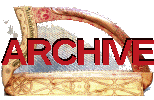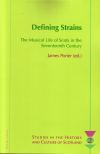
|
Sources for Gaelic harp music
How to approach the lute books
The oldest written Gaelic harp repertory is from the 17th century; a few tunes each in the Straloch ms, Skene ms, Wemyss ms and Balcarres ms.
All of these books are manuscripts written by amateur aristocratic musicians, and they all contain a wide selection of different types of music.
There is English and Continental music, quite polyphonic in texture and with many chromatic notes.
There are native settings of Scots song airs; these are songs in the Scots language (a dialect of English from the East of Scotland). These are quite plain and diatonic and can be (and often are) successfully played on early Gaelic harp, though they are not part of the old Gaelic harp repertory.
There are a very few Gaelic pieces, which were originally played on the early Gaelic harp. I have indicated and described them all on the pages for each individual source.
How to read the lute tablature
Lute tablature is written on a number of lines, representing the strings on the neck of the lute. In the French systems used for the Scottish lute books, the lowest pitched string is at the bottom and the highest at the top.
The tablature does not indicate exact pitch, but is an instruction to fret a certain string at a certain point. This means that the lute can be tuned to an arbitrary pitch and still be in tune with itself.
The frets on the lute are chromatic, i.e. each fret is a semitone higher than the previous one.
The letters written on the lines are NOT note names but indicate which fret is to be pressed on the respective string. The letter a is the open string; b is the first fret; c is the 2nd fret etc.
So if the top string is tuned to the note a', then the letter a on the top line refers to that note a'. The letter c on the top line instructs you to fret the top (a') string at the second fret, which raises its pitch by 2 semitones and sounds the note b'. Similarly, the letter d on the top line indicates a rise of one more semitone, or three semitones from the open note a', which is the note c'. You have to count in semitones, and be always aware of where the whole tones and where the semitones are in your scale.
The Renaissance lute used in the Straloch manuscript is tuned in 4ths, with a 3rd in the middle. It also has at least 4 extra bass strings that are not fretted but descend in diatonic whole steps. They are indicated by letters and slashes below the bottom line, descending a, /a, //a and ///a.
The following charts explain the correspondence between the lute tablature (using an A lute tuning), and the strings of a Gaelic harp tuned with f#.
All 5 ports in the Straloch lute book use the following tuning:
Straloch tuning

Lady Margaret Wemyss used a number of different tunings. ‘Port Robart’ is notated for the ‘Straloch’ tuning given above; the ‘Irish Port’ and ‘Da Mihi Manum’ are notated for a ‘sharp’ tuning which is shown below (the two top strings are turned down so they make intervals of a 3rd rather than a 4th).
Wemyss Sharp tuning

The Balcarres lute books uses similar tunings, which are all explained in little charts in the book. First up is the ‘Flatt’ tuning:
Balcarres Flat tuning

This chart will serve for all of the Gaelic harp repertory in the Balcarres manuscript, except ‘Port Atholl, mr lesslies way’ which is in ‘the highest tuneing of the lute’ (chart to follow).
The Skene book is for mandore, a small, high-pitched 4 or 5 string instrument. I hope to add charts for this in the future.
The two music books by Robert Philips and Ronn MacFarlane include side-by-side versions in staff notation and typeset lute tablature, so you can compare the two systems easily.
Musical style in the lute books
The music in the lute books is notated for lute and therefore we expect it to present lute idiom. However the Gaelic harp repertory presented in the books is different enough in style from the other Scots, English and Continental repertory in the same books, that we may suspect it preserves some vestiges of Gaelic harp idiom.
My suggestion is that the lute book settings of these specific Gaelic harp tunes display idiomatic Gaelic harp basses, and so the notes in the lute tablature can be played ‘as is’ on the Gaelic harp, without adding or removing any notes.
Some of the ornaments indicated in the lute books can be played in their notated position; others seem to be idiomatic for lute, and less appropriate for Gaelic harp.
One of the Straloch ports includes both a sharpened and a flattened 7th. Obviously on the Gaelic harp this is impossible; I suggest simply playing all the 7ths the same (preferably flat!). Similarly, two of the pieces in Lady Margaret Wemyss’s book indicate accidentals; it is not clear if these are errors (e.g. the correct letter written on the wrong line, or the wrong letter) or lute idiom. The practical solution for Gaelic harp is to play the most appropriate note of the scale and carry on.
Listen to as many lute performances as you can. I have indicated Rob MacKillop’s CD recordings. Other excellent lutenists who have recorded this repertory are Ronn MacFarlane and Jakob Lindberg, and I will add their recordings soon.

Further Reading
Rob MacKillop has an excellent article on the Scottish lute manuscripts in James Porter’s book, Defining Strains: The Musical Life of Scots in the Seventeenth Century. You can order a copy here from the Emporium.
Lecture on the lute books
This lecture at the University of St Andrews discusses the 17th century Scottish lute and viol manuscripts in general, with various musical examples.
Simon Chadwick